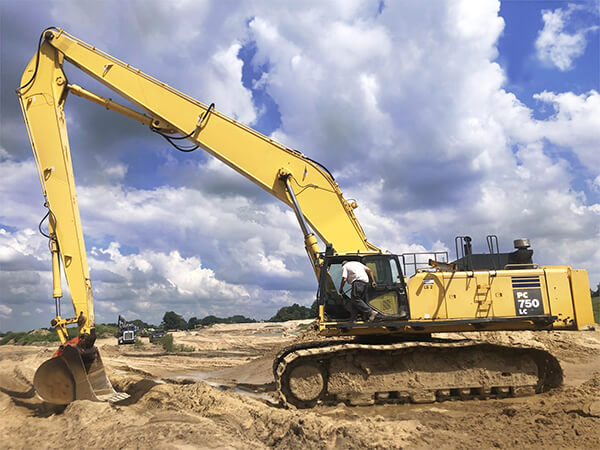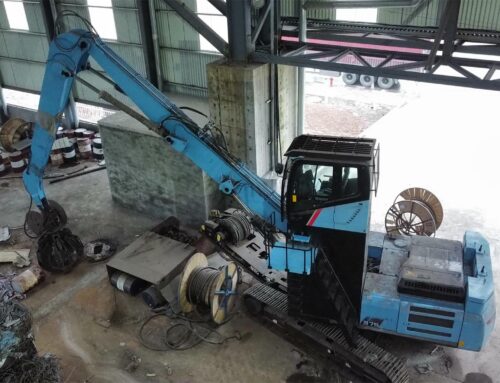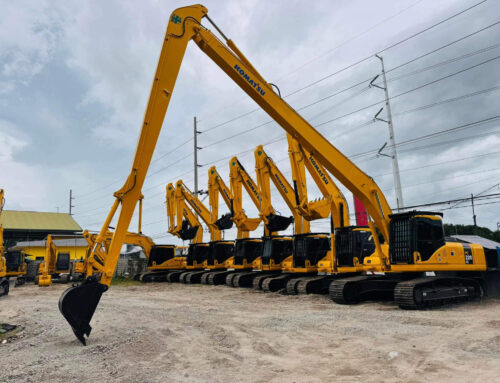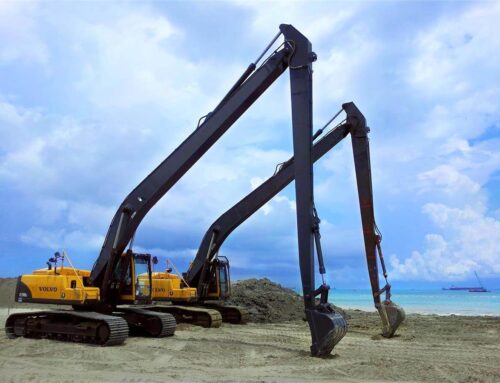River cleaning is a crucial activity to maintain the ecological balance, prevent flooding, and ensure the well-being of aquatic ecosystems and surrounding communities. Excavator long reach front play a pivotal role in efficiently removing debris, sediment, and other pollutants from rivers. However, operating these heavy machinery near water bodies demands meticulous precautions to ensure the safety of operators, equipment, and the environment. This article outlines essential precautions to consider when using an excavator long reach front for river cleaning.
-
Operator Training and Certification:
Proper training and certification for excavator operators are fundamental. Operators should possess the necessary skills and knowledge to handle the machinery safely and efficiently, especially in sensitive environments like rivers. Regular refresher training sessions should be conducted to keep operators updated with the latest safety protocols.
-
Site Assessment and Planning:
Before commencing any river cleaning activity, a comprehensive site assessment should be carried out. Identify potential hazards, underwater obstacles, and areas of high water currents. Develop a detailed cleaning plan that includes equipment positioning, access points, and safe working distances from the water’s edge.
-
Environmental Considerations:
River ecosystems are delicate environments, and any disruption can have far-reaching consequences. Adhere to all environmental regulations and guidelines to minimize the impact on aquatic life and vegetation. Implement sediment and erosion control measures to prevent pollutants from entering the water.
-
Stability and Ground Conditions:
The stability of the excavator is critical to prevent accidents and damage. Ensure that the ground beneath the excavator is firm and stable enough to support its weight. Avoid working on soft or unstable riverbanks that could give way under the machinery’s load.
-
Equipment Inspection and Maintenance:
Regular inspection and maintenance of the excavator long reach front are essential to ensure safe operation. Check hydraulic systems, mechanical components, and attachments for signs of wear or damage. Replace any faulty parts immediately to prevent accidents during river cleaning.
-
Safety Barriers and Signage:
Establish clear safety barriers and signage to demarcate the work area. This helps prevent unauthorized access and ensures that bystanders, including other workers and recreational users, are kept at a safe distance from the operating excavator.
-
Personal Protective Equipment (PPE):
All personnel involved in river cleaning must wear appropriate PPE, including high-visibility clothing, hard hats, steel-toed boots, gloves, and life jackets. Personal flotation devices are particularly important when working near water bodies.
-
Communication and Signals:
Establish clear communication protocols between the operator and ground personnel. Use standardized hand signals or communication devices to convey instructions and warnings effectively. This enhances coordination and reduces the risk of accidents.
-
Emergency Preparedness:
Develop a comprehensive emergency response plan that includes procedures for potential accidents, equipment malfunction, and personnel evacuation. Ensure that all workers are familiar with the plan and know the location of emergency equipment such as first aid kits and fire extinguishers.
-
Weather Monitoring:
Weather conditions can impact river flow, water levels, and overall safety. Regularly monitor weather forecasts and be prepared to halt operations in the event of adverse conditions such as heavy rainfall, lightning, or flooding.
Conclusion
River cleaning using an excavator long reach front is a critical task for maintaining the health of water bodies and surrounding areas. By adhering to the outlined precautions, operators can ensure safe and efficient river cleaning operations while minimizing environmental impact and promoting the well-being of all involved parties. Always prioritize safety, proper training, and environmental stewardship when conducting river cleaning activities.
-
Proper Attachment Selection:
Choose the appropriate attachments for the excavator long reach front based on the specific cleaning tasks required. Different attachments, such as buckets, grabs, or rakes, may be needed to effectively remove debris, sediment, and pollutants from the riverbed and banks. Ensure that attachments are properly secured and in good working condition.
-
Avoid Overreach:
Excavator operators should be cautious not to overreach beyond the safe operating range of the equipment. Overextending the excavator’s arm can compromise stability and increase the risk of tipping over, especially when working near the edge of the riverbank.
-
Slow and Controlled Movements:
Maintain slow and controlled movements while operating the excavator long reach front. Sudden and jerky motions can destabilize the equipment and lead to accidents or damage. Use the excavator’s controls with precision to minimize the risk of mishaps.
-
Bystander Awareness:
Educate bystanders, local residents, and other workers in the vicinity about the ongoing river cleaning operation. Prominently display warning signs and communicate potential hazards to prevent unintentional entry into the work area.
-
Proper Waste Disposal:
Establish a systematic waste disposal plan for collected debris and pollutants. Sort and segregate materials to facilitate proper recycling or disposal in accordance with local regulations. Avoid dumping waste directly into the river, as this can exacerbate pollution issues.
-
Regular Breaks and Rest:
Operating an excavator can be physically demanding work, especially during extended river cleaning operations. Ensure that operators take regular breaks and stay hydrated to maintain focus and prevent fatigue-related accidents.
-
Review and Continuous Improvement:
After each river cleaning project, conduct a thorough review of the operation’s successes and challenges. Identify areas for improvement and implement necessary changes in training, procedures, or equipment to enhance safety and efficiency for future projects.
-
Community Engagement:
Involve local communities and stakeholders in the river cleaning process. By fostering a sense of ownership and responsibility, you can encourage support for the cleaning efforts and ensure that the project aligns with the needs and preferences of the community.
-
Coordination with Authorities:
Collaborate with relevant local authorities, environmental agencies, and other stakeholders before initiating river cleaning activities. Obtain any required permits, approvals, or clearances to ensure compliance with regulations and avoid potential legal issues.
-
Documentation and Reporting:
Maintain detailed records of all river cleaning activities, including operation logs, equipment maintenance, and safety assessments. These records can serve as valuable references for future projects and contribute to accountability and transparency.
Conclusion
River cleaning using an excavator long reach front is a vital endeavor that requires meticulous planning, rigorous adherence to safety protocols, and a deep commitment to environmental preservation. By incorporating these additional precautions into your river cleaning operations, you can contribute to cleaner water bodies, healthier ecosystems, and safer working conditions for everyone involved. As technology and best practices evolve, it is crucial to stay informed and continuously adapt to ensure the success and sustainability of river cleaning initiatives.









Leave A Comment